Japanese Mythology in Anime: When Ancient Tales Come to Life
Mythical Beginnings: How Ancient Legends Shape Anime
Japanese mythology is rich and diverse, being a blend of traditional Shintō beliefs, Buddhism, and local folk tales. From the creation of the islands by gods Izanagi and Izanami to legendary creatures like tengu and kappa, these stories have been shaping Japanese culture and traditions for centuries. They've introduced not only elements of mysticism but also moral and philosophical teachings that have helped shape society. Internationally renowned anime frequently taps into this wealth, marrying tradition with modernity. Japanese mythology doesn't just provide colorful characters and tales, but also intricate conflicts and moral dilemmas which become the canvas for many hit shows.
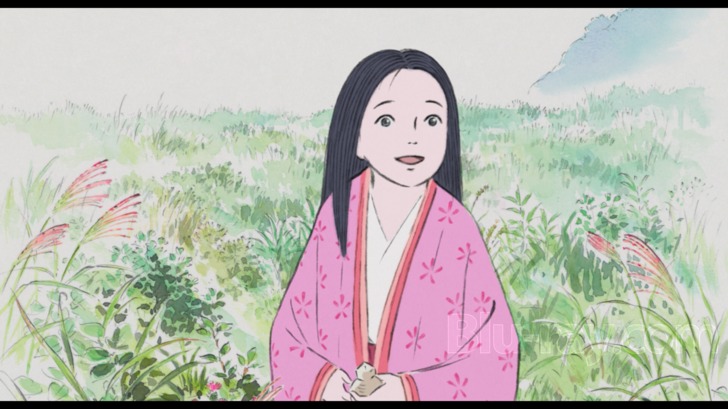
Studio Ghibli: On the Wings of Legend
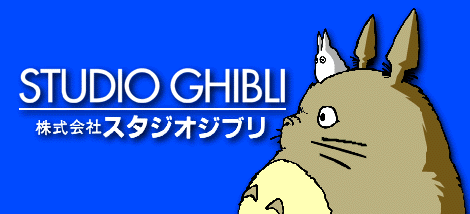
One of the most mesmerizing examples of this ability is "The Tale of The Princess Kaguya." This story is based on one of the oldest Japanese folk tales titled "Taketori Monogatari" (The Bamboo Cutter's Tale). The legend speaks of a mysterious girl originating from the Lunar Kingdom, landing on Earth within a bamboo stalk. Ghibli, in its adaptation, skillfully blends elements of the original tale with contemporary themes of identity search and parenting challenges.
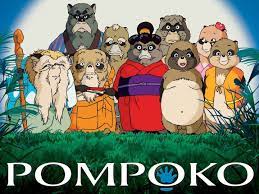
"When Marnie was There" is another studio film drawing from Japanese tales of spirits and supernatural phenomena. While not as directly based on a specific myth as other Ghibli productions, it's imbued with the spirit of Japanese folklore, particularly in depicting relations between humans and spirits.
What sets Studio Ghibli films apart is not just their adaptability but also how they fuse tradition with modernity. While relying on tales told over centuries, they can tailor them for contemporary audiences, adding layers of depth and meaning.
Mononoke Hime: Ancient Spirits of the Forest in Anime
"Mononoke Hime," also known as "Princess Mononoke," is one of the most revered films of Studio Ghibli, directed by the unparalleled Hayao Miyazaki. The movie is rich with references to Japanese legends and myths.
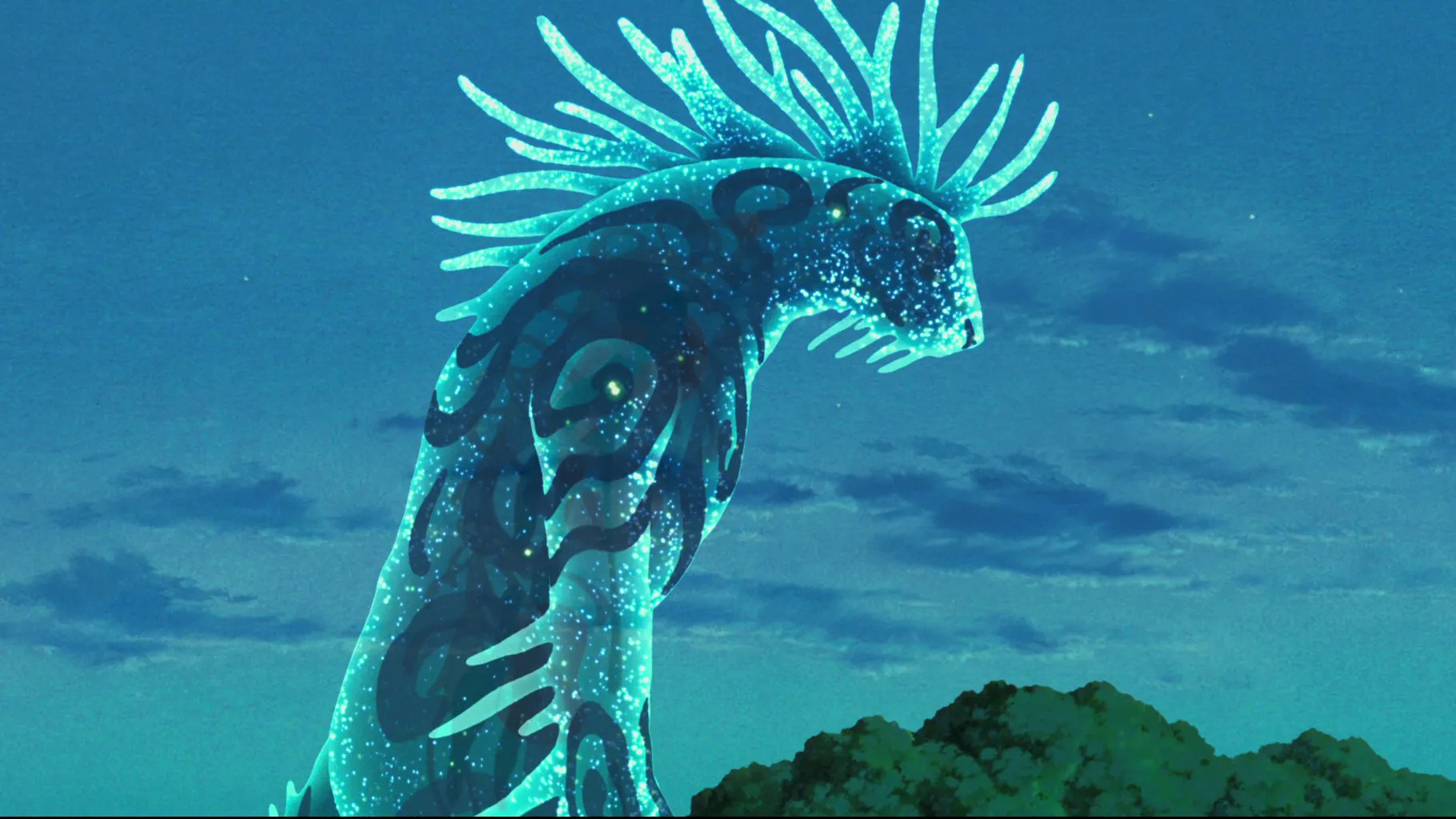
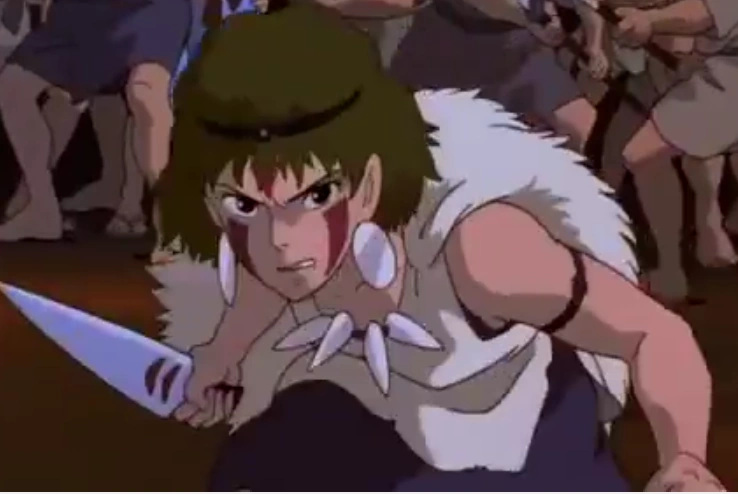
"Mononoke Hime" is filled with subtle references to Japanese folklore, from animal spirits defending the forest to Shinto rituals and practices. Through these elements, Miyazaki showcases the beauty and depth of Japanese culture and underscores the importance of coexisting with nature.
Inuyasha: The Fabric of Japanese Mythology at the Heart of Anime
The historical and spiritual context: "Inuyasha" is set in feudal Japan, a time replete with legends, spirits, and demons. The very character of Inuyasha, a half-demon (hanyō), is deeply rooted in Japanese folklore. Hanyōs are figures often found in folktales, offspring of a spirit and a human, suffering due to their dual heritage and sharing traits of both worlds.
 The Shikon no Tama (Jewel of Four Souls) is a stone central to the anime's main plot. It's portrayed as a powerful artifact that enhances demons' powers and turns half-demons into full demons. In Japanese mythology, many such relics and talismans possess extraordinary powers. The Shikon no Tama references the Buddhist concept of the four souls (aramitama, nigimitama, sakimitama, and kushimitama) representing different spirit facets.
The Shikon no Tama (Jewel of Four Souls) is a stone central to the anime's main plot. It's portrayed as a powerful artifact that enhances demons' powers and turns half-demons into full demons. In Japanese mythology, many such relics and talismans possess extraordinary powers. The Shikon no Tama references the Buddhist concept of the four souls (aramitama, nigimitama, sakimitama, and kushimitama) representing different spirit facets.
 Throughout the anime, we encounter a plethora of demons and spirits. Examples like Shippō, a kitsune (fox demon), and Sesshōmaru, Inuyasha's elder brother and a full demon, are direct lifts from Japanese folklore. Kitsune are frequent characters in Japanese tales, being wise creatures with multiple tails. Another is Naraku, the series' main antagonist, whose name references the Buddhist hell.
Throughout the anime, we encounter a plethora of demons and spirits. Examples like Shippō, a kitsune (fox demon), and Sesshōmaru, Inuyasha's elder brother and a full demon, are direct lifts from Japanese folklore. Kitsune are frequent characters in Japanese tales, being wise creatures with multiple tails. Another is Naraku, the series' main antagonist, whose name references the Buddhist hell.
Locations and objects, such as the Tree of Time where Kagome first meets Inuyasha, have deep roots in Shinto, Japan's indigenous religion. Trees are often seen as spirit residences and are central in many Shinto temples. Similarly, the gate Kagome uses to transition between the modern world and feudal Japan resembles the torii, traditional Shinto gates. "Inuyasha" is rife with Japanese mythology references, creating an enthralling world that merges historical, mythological, and fantasy elements.
In the Land of Dragons and Legends: Japanese Mythology in "Dragon Ball"
 Turtle Hermit and Kamehameha: Master Roshi, also known as Turtle Hermit, employs a martial arts technique named Kamehameha, which translates to "Turtle Wave." While the technique isn't directly linked to Japanese mythology, the idea of an old sage or hermit teaching a younger hero is a recurrent theme in many Japanese legends.
Turtle Hermit and Kamehameha: Master Roshi, also known as Turtle Hermit, employs a martial arts technique named Kamehameha, which translates to "Turtle Wave." While the technique isn't directly linked to Japanese mythology, the idea of an old sage or hermit teaching a younger hero is a recurrent theme in many Japanese legends.
Wukong and Son Goku: The name of the main character, Goku, and his signature tail find their roots in the Chinese tale "Journey to the West." In this legend, the central character is Sun Wukong, the Monkey King, boasting immense strength and a tail. Like Wukong, Goku can ride on a cloud and wields a staff that can extend in length.
 Beerus, God of Destruction: In "Dragon Ball Super," we meet Beerus, the God of Destruction, who plays a pivotal role in maintaining cosmic balance through annihilation. This idea mirrors a deity from Japanese mythology named Susanoo. Susanoo, the younger sibling of the sun deity Amaterasu, is often depicted as a god of storms and the sea. His capricious behavior has led to chaos and destruction in various myths. In one of the most renowned tales, Susanoo devastates his sister's rice fields, leading to a rift between them. While Beerus isn't a direct adaptation of Susanoo, his role as a god who destroys to maintain order and equilibrium echoes this mythological figure.
Beerus, God of Destruction: In "Dragon Ball Super," we meet Beerus, the God of Destruction, who plays a pivotal role in maintaining cosmic balance through annihilation. This idea mirrors a deity from Japanese mythology named Susanoo. Susanoo, the younger sibling of the sun deity Amaterasu, is often depicted as a god of storms and the sea. His capricious behavior has led to chaos and destruction in various myths. In one of the most renowned tales, Susanoo devastates his sister's rice fields, leading to a rift between them. While Beerus isn't a direct adaptation of Susanoo, his role as a god who destroys to maintain order and equilibrium echoes this mythological figure.
Majin Buu and his Sweet Tooth: Majin Buu, one of the most unpredictable characters in "Dragon Ball Z," is known for transforming people into sweets and consuming them. This particular habit brings to mind certain yōkai from Japanese legends. One is Shiro-uneri, a spirit of old, grimy rags that rolls into a ball and devours anything in its path. Another yōkai, the Futakuchi-onna, is a woman with a second mouth on the back of her head that speaks and eats for her. This secondary mouth is often hungry and can compel the woman to eat excessively. Although neither yōkai transforms people into food literally, like Buu does, their insatiable hunger and bizarre eating habits can be paralleled with his unusual tastes.
Yamcha and the Desert Bandit: The character Yamcha is initially introduced as a desert bandit, referencing traditional Japanese stories of bandits and lone warriors. His companion, Puar, resembles Japanese mythological creatures called "bakeneko" - cat spirits.
Demonic Figures and Realms: In "Dragon Ball," various demonic figures like Piccolo or Dabura, the Demon King, emerge. While their appearance and characteristics are unique to the series, the concept of demons and other supernatural entities is deeply rooted in Japanese tales and legends.
 Korin, the mysterious blue cat residing at Korin Tower and one of the oldest, wisest, and most seasoned martial arts masters in the Dragon Ball world, draws from elements of Japanese culture and mythology. In Japan, cats are frequently seen as magical entities. For instance, the "maneki-neko" is a popular cat figure that waves one paw and is considered a luck-bringing talisman. Although Korin isn't a direct representation of the "maneki-neko," his wisdom and magical abilities align with how cats are often portrayed in Japanese culture.
Korin, the mysterious blue cat residing at Korin Tower and one of the oldest, wisest, and most seasoned martial arts masters in the Dragon Ball world, draws from elements of Japanese culture and mythology. In Japan, cats are frequently seen as magical entities. For instance, the "maneki-neko" is a popular cat figure that waves one paw and is considered a luck-bringing talisman. Although Korin isn't a direct representation of the "maneki-neko," his wisdom and magical abilities align with how cats are often portrayed in Japanese culture.
Ghosts of Japanese Mythology Woven into the Spirit of Anime
Yōkai - These supernatural beings, often translated as spirits or monsters, are omnipresent in Japanese mythology. They appear in various forms and characters, from malevolent to benevolent. In the anime "GeGeGe no Kitaro", the main character, Kitaro, is a yōkai who confronts various spirits and monsters. Similar entities also appear in "InuYasha", where the main character, the half-yōkai Inuyasha, travels through feudal Japan in search of shards of a magical jewel.
 Kami - These are gods or spirits present in Shinto, Japan's traditional religion. They can represent various aspects of nature, objects, or phenomena. In "Noragami", the main character, Yato, is a minor deity who wants to acquire his own shrine and be worshiped as a god.
Kami - These are gods or spirits present in Shinto, Japan's traditional religion. They can represent various aspects of nature, objects, or phenomena. In "Noragami", the main character, Yato, is a minor deity who wants to acquire his own shrine and be worshiped as a god.
Oni - Demons of Japanese mythology, often depicted as massive creatures with horns, wild hair, and wielding weapons. "Momotaro", a famous Japanese folklore, tells the story of a boy who battles the Oni on a distant island. This motif has been adapted in various forms in anime, like in "Dragon Ball", where Son Goku, at a certain point in his childhood, transforms into a giant ape resembling the features of an Oni.
Tengu - These are birdlike creatures with human traits. They are often associated with Buddhist monks and mountains. In "Kamisama Kiss", one of the main characters, Kurama, is a tengu who takes on a human form to become a pop idol in the human world.
 Kappa - Aquatic creatures with human traits that live in rivers and lakes. They are known for challenging others to sumo matches and have an obsession with cucumbers. In "Sarazanmai", kappas play a crucial role as the main characters are transformed into these creatures and must battle other monsters to regain their human form.
Kappa - Aquatic creatures with human traits that live in rivers and lakes. They are known for challenging others to sumo matches and have an obsession with cucumbers. In "Sarazanmai", kappas play a crucial role as the main characters are transformed into these creatures and must battle other monsters to regain their human form.
All these mythological elements have been woven into the narrative of modern anime, showcasing how deep the roots of Japanese mythology run in the country's pop culture.
Through the Eyes of the Gods: Mythological Echoes in the World of Anime
Japanese mythology, filled with gods, spirits, and creatures, has for centuries influenced the stories and culture of the Land of the Rising Sun. Its presence in anime underscores not only the creativity of its creators but also a deep need to connect with roots and heritage. In a world where technology overshadows tradition, anime becomes a bridge connecting contemporary viewers to ancient legends, reminding them of the values, dreams, and fears of their ancestors.
However, it's not just nostalgia and respect for tradition that make anime draw from mythology. Mythological elements provide rich, multidimensional contexts that enrich stories and add depth to characters. Thanks to them, stories become universal, becoming equally important to a viewer in Tokyo as to one in Toronto. After all, regardless of culture or era, the desire to understand our past and connect with it is innate to every human being.
"Strong Japanese Women"
see book by the author
of the page
未開 ソビエライ
An enthusiast of Asian culture with a deep appreciation for the diverse philosophies of the world. By education, a psychologist and philologist specializing in Korean studies. At heart, a programmer (primarily for Android) and a passionate technology enthusiast, as well as a practitioner of Zen and mono no aware. In moments of tranquility, adheres to a disciplined lifestyle, firmly believing that perseverance, continuous personal growth, and dedication to one's passions are the wisest paths in life. Author of the book "Strong Women of Japan" (>>see more)
Personal motto:
"The most powerful force in the universe is compound interest." - Albert Einstein (probably)
Mike Soray
(aka Michał Sobieraj)
未開 ソビエライ
An enthusiast of Asian culture with a deep appreciation for the diverse philosophies of the world. By education, a psychologist and philologist specializing in Korean studies. At heart, a programmer (primarily for Android) and a passionate technology enthusiast, as well as a practitioner of Zen and mono no aware. In moments of tranquility, adheres to a disciplined lifestyle, firmly believing that perseverance, continuous personal growth, and dedication to one's passions are the wisest paths in life. Author of the book "Strong Women of Japan" (>>see more)
Personal motto:
"The most powerful force in the universe is compound interest." - Albert Einstein (probably)
Mike Soray
(aka Michał Sobieraj)
Write us...
Ciechanów, Polska
dr.imyon@gmail.com
___________________
inari.smart
Would you like to share your thoughts or feedback about our website or app? Leave us a message, and we’ll get back to you quickly. We value your perspective!
 The Shikon no Tama (Jewel of Four Souls) is a stone central to the anime's main plot. It's portrayed as a powerful artifact that enhances demons' powers and turns half-demons into full demons. In Japanese mythology, many such relics and talismans possess extraordinary powers. The Shikon no Tama references the Buddhist concept of the four souls (aramitama, nigimitama, sakimitama, and kushimitama) representing different spirit facets.
The Shikon no Tama (Jewel of Four Souls) is a stone central to the anime's main plot. It's portrayed as a powerful artifact that enhances demons' powers and turns half-demons into full demons. In Japanese mythology, many such relics and talismans possess extraordinary powers. The Shikon no Tama references the Buddhist concept of the four souls (aramitama, nigimitama, sakimitama, and kushimitama) representing different spirit facets.  Throughout the anime, we encounter a plethora of demons and spirits. Examples like Shippō, a kitsune (fox demon), and Sesshōmaru, Inuyasha's elder brother and a full demon, are direct lifts from Japanese folklore. Kitsune are frequent characters in Japanese tales, being wise creatures with multiple tails. Another is Naraku, the series' main antagonist, whose name references the Buddhist hell.
Throughout the anime, we encounter a plethora of demons and spirits. Examples like Shippō, a kitsune (fox demon), and Sesshōmaru, Inuyasha's elder brother and a full demon, are direct lifts from Japanese folklore. Kitsune are frequent characters in Japanese tales, being wise creatures with multiple tails. Another is Naraku, the series' main antagonist, whose name references the Buddhist hell.  Turtle Hermit and Kamehameha: Master Roshi, also known as Turtle Hermit, employs a martial arts technique named Kamehameha, which translates to "Turtle Wave." While the technique isn't directly linked to Japanese mythology, the idea of an old sage or hermit teaching a younger hero is a recurrent theme in many Japanese legends.
Turtle Hermit and Kamehameha: Master Roshi, also known as Turtle Hermit, employs a martial arts technique named Kamehameha, which translates to "Turtle Wave." While the technique isn't directly linked to Japanese mythology, the idea of an old sage or hermit teaching a younger hero is a recurrent theme in many Japanese legends.  Beerus, God of Destruction: In "Dragon Ball Super," we meet Beerus, the God of Destruction, who plays a pivotal role in maintaining cosmic balance through annihilation. This idea mirrors a deity from Japanese mythology named Susanoo. Susanoo, the younger sibling of the sun deity Amaterasu, is often depicted as a god of storms and the sea. His capricious behavior has led to chaos and destruction in various myths. In one of the most renowned tales, Susanoo devastates his sister's rice fields, leading to a rift between them. While Beerus isn't a direct adaptation of Susanoo, his role as a god who destroys to maintain order and equilibrium echoes this mythological figure.
Beerus, God of Destruction: In "Dragon Ball Super," we meet Beerus, the God of Destruction, who plays a pivotal role in maintaining cosmic balance through annihilation. This idea mirrors a deity from Japanese mythology named Susanoo. Susanoo, the younger sibling of the sun deity Amaterasu, is often depicted as a god of storms and the sea. His capricious behavior has led to chaos and destruction in various myths. In one of the most renowned tales, Susanoo devastates his sister's rice fields, leading to a rift between them. While Beerus isn't a direct adaptation of Susanoo, his role as a god who destroys to maintain order and equilibrium echoes this mythological figure.  Korin, the mysterious blue cat residing at Korin Tower and one of the oldest, wisest, and most seasoned martial arts masters in the Dragon Ball world, draws from elements of Japanese culture and mythology. In Japan, cats are frequently seen as magical entities. For instance, the "maneki-neko" is a popular cat figure that waves one paw and is considered a luck-bringing talisman. Although Korin isn't a direct representation of the "maneki-neko," his wisdom and magical abilities align with how cats are often portrayed in Japanese culture.
Korin, the mysterious blue cat residing at Korin Tower and one of the oldest, wisest, and most seasoned martial arts masters in the Dragon Ball world, draws from elements of Japanese culture and mythology. In Japan, cats are frequently seen as magical entities. For instance, the "maneki-neko" is a popular cat figure that waves one paw and is considered a luck-bringing talisman. Although Korin isn't a direct representation of the "maneki-neko," his wisdom and magical abilities align with how cats are often portrayed in Japanese culture. Kami - These are gods or spirits present in Shinto, Japan's traditional religion. They can represent various aspects of nature, objects, or phenomena. In "Noragami", the main character, Yato, is a minor deity who wants to acquire his own shrine and be worshiped as a god.
Kami - These are gods or spirits present in Shinto, Japan's traditional religion. They can represent various aspects of nature, objects, or phenomena. In "Noragami", the main character, Yato, is a minor deity who wants to acquire his own shrine and be worshiped as a god. Kappa - Aquatic creatures with human traits that live in rivers and lakes. They are known for challenging others to sumo matches and have an obsession with cucumbers. In "Sarazanmai", kappas play a crucial role as the main characters are transformed into these creatures and must battle other monsters to regain their human form.
Kappa - Aquatic creatures with human traits that live in rivers and lakes. They are known for challenging others to sumo matches and have an obsession with cucumbers. In "Sarazanmai", kappas play a crucial role as the main characters are transformed into these creatures and must battle other monsters to regain their human form.

